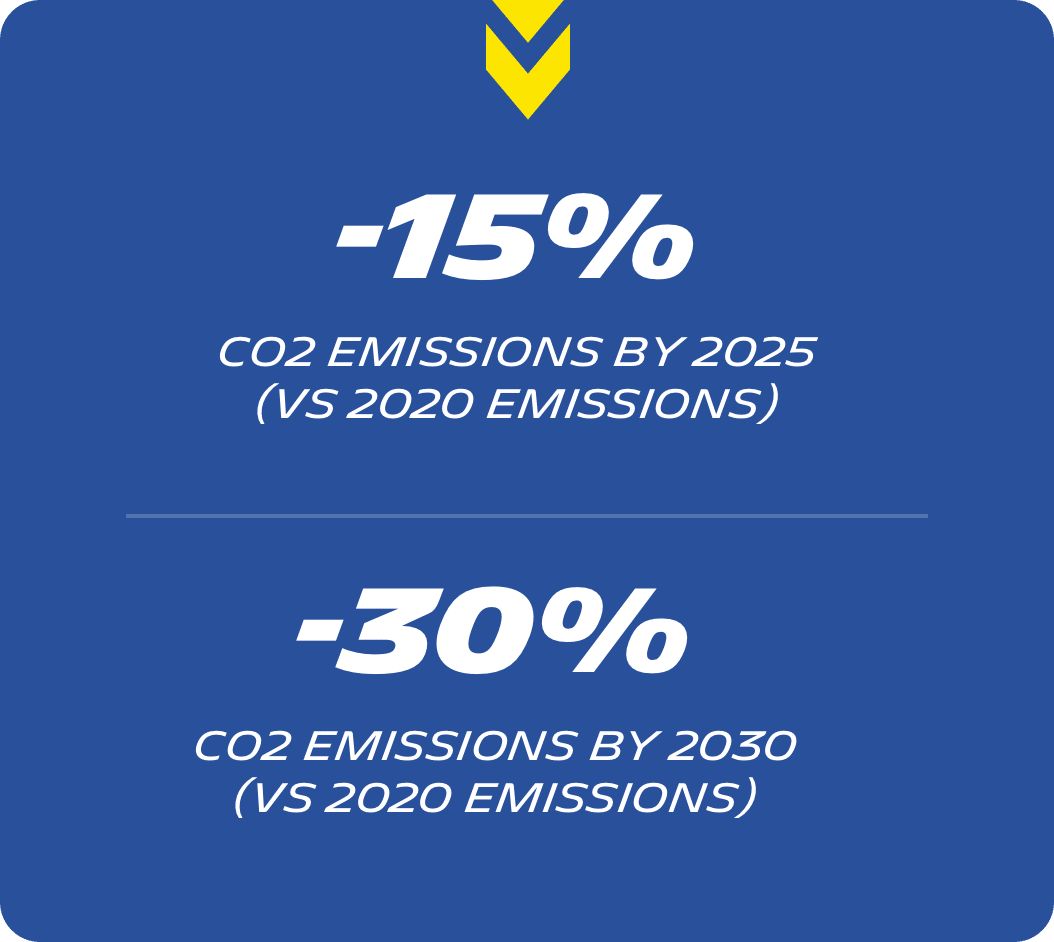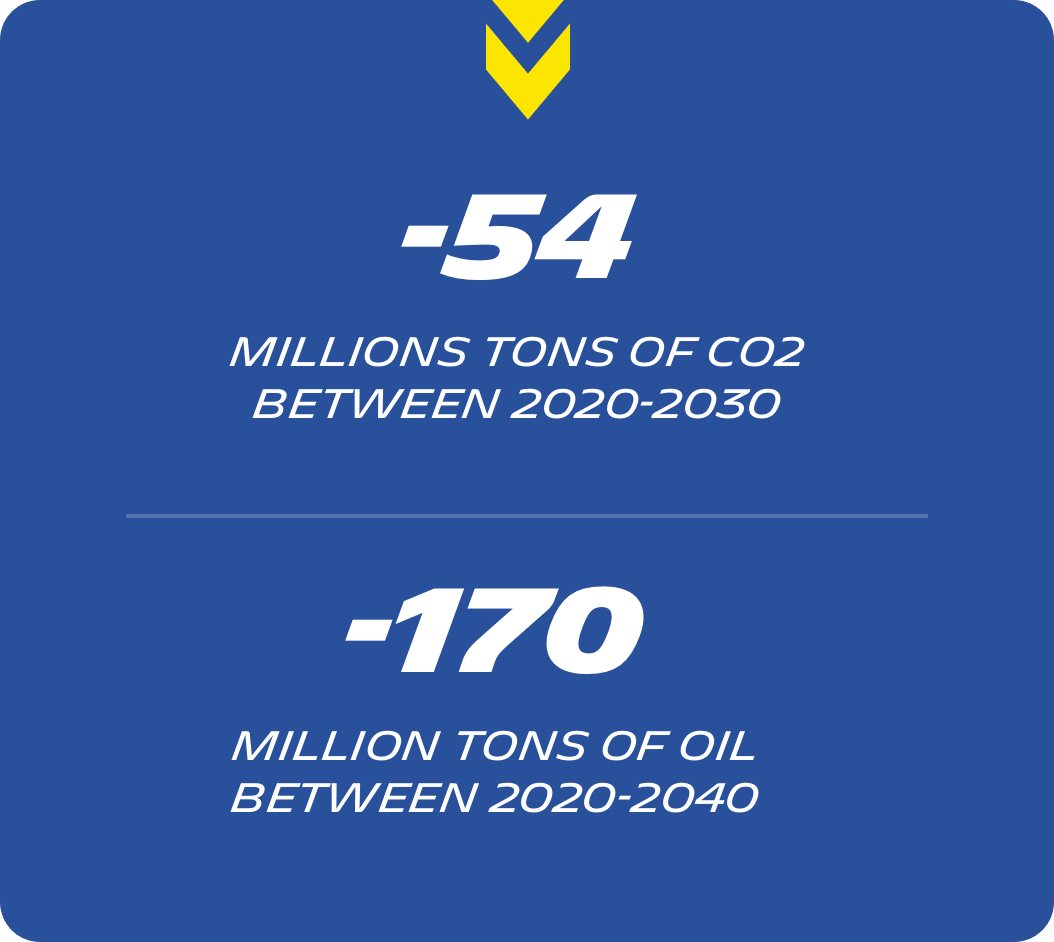
post hero banner sustainable mobility
Regulations. The word alone is daunting. Following these regulations can be even more intimidating when you don’t understand all the rules. As governments around the world impose sustainability regulations on various industry players, everyone will soon have a role to play in reducing CO2 emissions. We sat down with Eve Hagendorf, Michelin’s Technical Director and Sustainable Mobility Ambassador, to understand the challenges that lie ahead and what fleet owners need to know.

post portrait sustainable mobility
Eve Hagendorf, Michelin’s Technical Director and Sustainable Mobility Ambassador
The EU commission recently launched the first ever EU-wide CO2 emission standards for heavy-duty vehicles. Why now?
Eve Hagendorf: Today, one of the key challenges we face as an industry is climate change and this is absolutely linked to CO2 emissions. There is an urgent and growing worldwide trend to reduce these emissions1 and it is the main purpose of this new regulation. Under these guidelines, every new truck sold in Europe. It started with heavy duty vehicles, moved on to medium duty, and in the near future, you will also see it applied to coaches, vans and trailers.
Right now every OEM will need to declare CO2 emission performance of any new heavy-duty vehicle sold in Europe. To do so the EU commission as worked with Universities and OEMs experts together to define a way to calculate CO2 emissions. The result was VECTO (Vehicle Energy Consumption Calculation Tool). Using this tool, OEMs declare global CO2 performance based on the component selected for each truck configuration define by their fleets customer. And tyre is among the most impact full component.
And do you think that fleet owners are aware of this regulation?
E.H.: Today, fleet owners aren’t directly impacted, so unfortunately, many aren’t even aware that this regulation exists. When they start renewing their fleets with new trucks, they will start to notice that their specification options are much more limited. Here is where tyre choice comes into play. It’s important to note that many fleet owners overlook the impact that tyres have on CO2 emissions. But the reality is, one-third of a truck’s energy consumption is linked directly to its tyres ౼ so making the right choice here is crucial.

arrow highlight yellow
What impacts a tyre’s CO2 emissions?
Rolling resistance is one tyre characteristic that, by design, contributes to energy efficiency. As tyres begin to wear out, rolling resistance lowers ౼ and during this key period, when rolling resistance is at its lowest, energy efficiency is at its highest. Michelin does everything possible to ensure that our tyres are safe and secure even when half worn. Regulations and robust tax incentives will push OEMs to take a long hard look at integrating low rolling resistance tyres, among other innovative technologies, into their trucks.
It’s clear that making the right choice is crucial. What would you say is the biggest misunderstanding when it comes to tyre choice?
E.H.: Several years ago, it was the common belief that choosing a label A tyre, the highest grade in terms of energy efficiency, meant sacrificing mileage performance, safety or endurance. But that’s just not the case. With the right innovative technology, they can have it all. At Michelin, we understand that fleets are very concerned with total cost of ownership (TCO); which is why we have invested so much to make sure that tyre also do the job for fleets business.

arrow highlight yellow
How to reduce carbon emissions by 10%
Fleet owners can reduce their CO2 emissions by 10% just by upgrading tyres by a two class difference (from class C to Class A).2
Can you explain to us how advancements in innovation and technology have made that possible?
E.H.: When you design a well rounded tyre, it needs to check all the boxes. It needs to tackle the CO2 challenge, it needs to be safe, long lasting and it needs to contribute to the circular economy thanks to strong retread performance. All elements are key and can only be reached through innovation. We have been working on multiple technologies that impact the tyre casing, tread patterns and the rubber itself ౼ all these factors can impact the performance balance.
If OEMs are the ones held accountable by this new regulation, why should fleet owners be concerned?
E.H.: If you look at the life cycle analysis of tyres, CO2 emissions are quite high during the usage phase. So that means fleet owners are instrumental to reducing emissions. In order to really make a difference, they need to understand the impact of their tyre choice when they renew their fleets. Without sacrificing their TCO, they can make a choice that contributes to this global goal of reducing CO2 emissions.
I think that the global pandemic has really highlighted the incredibly important role that fleets play in mobility and all that they make possible in our everyday lives. As we, as a society, rely more and more on fleets to deliver our goods and services, we need to be sure they have all the tools they need to move in the right direction in terms of decarbonization.
Eve Hagendorf, Michelin's Technical Director and Sustainable Mobility Ambassador
Sounds like fleets are a key factor in the global transition towards more sustainable mobility solutions. Would you say that their role will continue to evolve?
E.H.: Oh definitely. I think that the global pandemic has really highlighted the incredibly important role that fleets play in mobility and all that they make possible in our everyday lives. As we, as a society, rely more and more on fleets to deliver our goods and services, we need to be sure they have all the tools they need to move in the right direction in terms of decarbonization. Fleets work with very tight financial margins, so they need clever solutions that yield great benefits ౼ and tyres are just one of these solutions.
What does the future look like for fleets in terms of regulations and responsibility?
E.H.: In the years to come, fleet owners will increasingly be held accountable for the emissions levels of their vehicles ౼ not only in terms of regulations, but they will also be on the receiving end of pressure from their customers who have their own CO2 emissions targets to think about.
4 key figures you need to now
Average CO2 Emissions Reduction Targets3

post fig co2 sustainable mobility
Projected Results4

post fig result sustainable mobility

post new regulation sustainable mobility
The new regulation, in a nutshell
Applies to Heavy Duty Vehicles with a Gross Vehicle Weight +3500kg
- Rolling resistance, air drag, masses and inertias, gearbox friction, auxiliary power, engine performance and other parameters are calculated using VECTO to simulate fuel consumption and CO2 emissions.5
- Each truck configuration is given a CO2 performance value, which contributes to the OEMs overall annual emissions based on vehicles sold.
1 https://ourworldindata.org/co2-emissions-from-transport
2 Michelin internal estimation done in 2021, comparing CO2 emissions of a rolling resistance grade A tyre to a grade C tyre, hypothesis of average truck load at 30T.
3 OEMs emmissions reduction target : https://ec.europa.eu/clima/policies/transport/vehicles/heavy_en
4 https://ec.europa.eu/clima/policies/transport/vehicles/heavy_en
5 https://ec.europa.eu/clima/policies/transport/vehicles/heavy_en#:~:text=The%20Regulation%20(EU)%202019%2F,in%20a%20technology%2Dneutral%20way

gettyimages 930571046
car going fast on a road by night








